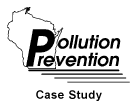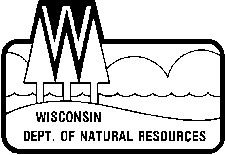
|
The Falk Corporation
Substitution of oil quench with
water-polymer solution
in heat-treat pit carburizing operations |
| Standard Industrial Classification
(SIC) |
Speed changers, drives and gears/3566 |
| Type of Waste |
Mineral oil liquid |
| Strategy |
Material substitution and process
modification |
| Company Background |
The Falk Corporation was established in the
Greater Milwaukee Area in 1892 and presently has approximately 1,300 employees at its main
plant. Falk produces mechanical power transmission equipment and sells the products
worldwide. Products include custom engineered steel castings, enclosed gear drives, open
gearing, custom industrial drives, and shaft fluid couplings. Industries served include:
cement, mining, automotive, paper, construction, and marine. |
| Original Process |
This case study applies to Falk's pit
carburizing of pinions and gears. Quench oil was used to heat-treat (harden) both
open-fired and special-atmosphere (carburized) parts in Falk's heat-treat department.
Parts are quenched at a temperature of 1525° F. |
| Motivation |
State regulations require that any new
process line emitting greater than 3.1 pounds of volatile organic compounds (VOC's)/hour
use a capture device with an 85 percent efficiency. For Falk, this device would have
required a capital investment of $500,000 to $1,000,000 plus associated energy and
maintenance costs. The company sought to avoid these costs and also wanted to reduce
drag-out in the quench tank. Falk was also concerned about possible smoke and fire hazards
associated with oil quenching of large parts. |
| Pollution Prevention Process |
The pit quench system is a recirculatory
system that holds 45,000 gallons of quench media. Pumps circulate the media from a surge
tank (20,000 gallon) to the main quench tank (25,000 gallon). Heating and cooling systems
are integrated into the process. During a parts quench, agitators circulate the media
within the quench tank. The equipment has a maximum capacity of 15 tons, resulting in
maximum emissions from the system of 2.17 pounds VOC/per hour which is below the maximum
allowable 3.1 pounds VOC/per hour limit. The polymer exhibits virtually no drag-out when
removing the parts from the quench tank. Any residual polymer clinging to the quenched
part is simply rinsed back into the quench tank with a brief water spray. This system
reduces another waste stream (tramp oil at the parts washer) while also reducing costs for
purchase of raw material. |
| Stage of Development |
The system is in full use in Falk's pit
carburizing facility |
| Level of Commercialization |
Polymer quenchant, which is mixed with
water at a ratio of approximately one part polymer to five parts water, has been
commercially available for many years. This is the first time that it has been applied to
a system this large. |
| Material/Energy Balance |
Proposed Pollution Control
Process
Feedstock
100 percent quench oilWaste
VOC air emissions and waste oil
Disposal
Wastewater (disposed of offsite by a Waste Management Company).
Pollution Prevention Process
Feedstock
80 percent H2O (fresh city water)
20 percent polymer
Waste
VOC air emissions are ~0.144 pounds per ton of steel quenched.
Disposal
None. This is a closed loop system. |
| Economics |
Capital Costs
Polymer quench system
7,000 gallons of polymer
Misc. fixtures, lifting devices
Emergency storage tank |
$420,000
$200,000
$ 20,000
$ 20,000 |
|
$660,000 |
Operation/Maintenance Costs
Not available.
Payback Period
Not calculated. However, the company avoided control equipment and maintenance costs
associated with the proposed process. This has resulted in a cost avoidance of ~$542,000. |
| Benefits |
The polymer quenchant, when mixed with
water, costs about the same per gallon as the oil quenchant. VOC's are reduced to a
fraction of that with oil, and drag-out is virtually eliminated. In over a year of
operation, no new raw product has been added to the system. |
| Obstacles |
Until now, polymer quenchant had not been
applied to finished carburized gear parts this large. The greatest risk was that parts
would crack due to the cooling rate of the quenchant. Falk experimented and found that
with the proper concentration and the proper start temperature the cooling curves were
similar to oil quenching. Additional features were designed into the system to reduce the
risk of cracking. |
| Technology Transfer |
This process has the potential for use in
other heat treating application systems. |
| Company Address |
The Falk Corporation
3001 West Canal Street
P.O. Box 492
Milwaukee, Wisconsin 53201-0492 |
| Contact Person |
Jack G. Habrat, P.E.
Plant Engineer
414/342-3131 |
| Pollution Prevention Resources |
Free, On-site Technical Assistance
University of Wisconsin Extension
Solid and Hazardous Waste Education Center
Milwaukee area: 414/475-2845
Remainder of state: 608/262-0385Pollution Prevention
Information Clearinghouse
Wisconsin Department of Natural Resources
Hazardous Waste Minimization Program
608/264-8852, 608/267-9523 or 608/267-3763 |
 |
Bureau of Cooperative Environmental Assistance
Wisconsin Department of Natural Resources
P.O. Box 7921
Madison, WI 53707
608/267-9700
PUBL-TS-044 96 |
|

